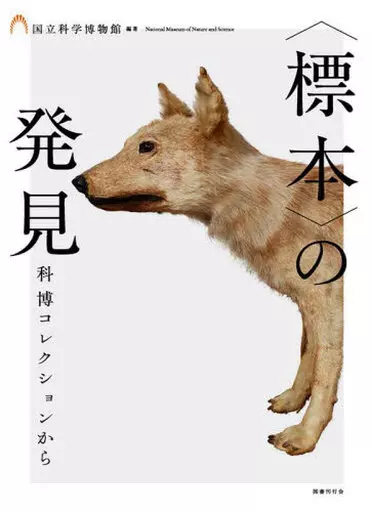Biological sciences and general biology From the Discovery Collection of <Specimen> / National Museum of Nature and Science
Product description ※Please note that product information is not in full comprehensive meaning because of the machine translation.
Biological Science and General Biology
[Contents introduction]
The National Museum of Nature and Science boasts the largest collection in Japan -- the story of each beautiful specimen.
Over 150 species, mainly of extinct and endangered species, were carefully selected by 14 researchers at the Family Expo.
The Japanese Archipelago boasts biodiversity in its rich natural environment in each season. Toki, Japanese wolf, japanese river otter, Kunimasu, Fuyu-natsukusa, Giant water bug. Beautiful color illustrations are added with episodes related to each species to learn about the story of extinction, the story of resurrection, and the frontier of science.
A visual book exploring the biodiversity of the Japanese Archipelago that "rediscovers" specimens that lead to the conservation of species and connects them to the future.
* The exhibition "Discovery! Japanese Biodiversity" (2021) at the National Museum of Nature and Science is reedited into a textbook.
* [Animal Research Department]
Tatsuya Ide (Researcher, Terrestrial Invertebrates Research Group)
Shinichiro Kawata (Researcher, Vertebrate Research Group)
Shigeko Tajima (Researcher, Vertebrate Research Group)
Isao Saikai (Researcher, Vertebrate Research Group)
Kazunori Hasegawa (Researcher, Marine Invertebrates Research Group)
[Plants Research Department]
Yudai Okuyama (Researcher, Biodiversity Analysis and Conservation Group)
Norio Tanaka (Researcher, Biodiversity Analysis and Conservation Group)
Kentaro Hosaka (Researcher, Fungi and Algae Research Group)
[Contents]
Introduction
Collection of Living Organisms at Family Expo / Category of Threatened Species A LOST FAMILY PLANT. HOW TO OBTAIN DNA FROM THE
Column Specimen
CONCLUSION
I want to know more about the Family Expo Specimen! Seven Q & As
Biographies of Authors
Opened in the year 1877, it is one of the oldest museums in Japan, and the only museum of natural history and history of science and technology.
As a core facility of Japanese and Asian science museums, it promotes surveys and research, collection, storage and utilization of specimens and materials, and supports exhibitions and learning.
It has a national collection of specimens and materials exceeding 5,000,000 points. It is active in the Ueno Main Library (Nihon Kan and Chikan Kan), the Tsukuba Research Facility (General Research Building and Natural History Specimen Building), the Tsukuba Botanical Garden, and 009 010 001 002 003 004 005 006 001 002 003 004 005 006 007 001 002 003 004 005 4,500,000 006 007 001 002 003 001 002 003 004 001 002 004 005 007 008 National Museum of Nature and Science National Museum of Nature and Science Institute for Nature Study and Nature Reserve National Museum of Nature and Science National Museum of Nature and Science National Museum of Nature and Science National Museum of Nature and Science National Museum of Nature and Science National Museum of Nature and Science National Museum of Nature and Science ムニンキヌラン チシマラッコ シマクモキリソウ 川知 コシガヤホシクサ Nakae Ako Shirokanedai トキウモウダニ カドタメクラチビ Takano Japanese photinia Small-scale whiting primrose Eurema laeta pteridophyte ptarmigan Japanese giant salamander Orchidaceae Yoshikawa Natsuhiko Utsugi Jinbo Japanese wolf japanese river otter Cunninghamia lanceolata Gomphus clavatus
